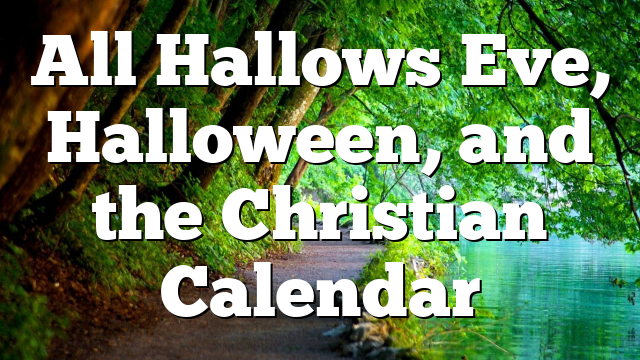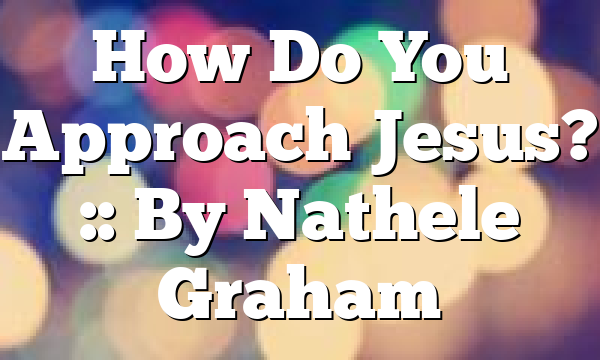Click to join the conversation with over 500,000 Pentecostal believers and scholars
Click to get our FREE MOBILE APP and stay connected
| PentecostalTheology.com



In the American Christian imagination, Halloween has been more of a holiday to be tolerated than one to be celebrated and affirmed. Among Christians, one can find a variety of perspectives, from denouncing it as pagan and Satanic to viewing it as another civic event that, properly understood, could be indulged in. Much of the time these pronouncements correspond to the degree of emphasis placed on holy living over against “worldly” forms of behavior.
Regardless, Halloween has become part of the ritual calendar of American civic life alongside of other rituals like Memorial Day, Thanksgiving, and the Fourth of July. Based on decorations and spending, Halloween has become second in popularity only to Christmas with stores now pairing the two holidays in their displays so that the ritual movement from October to December flows as one fluid shopping experience. For this reason, Christian churches must grapple with how to frame this ritual as part of Christian existence in America.
Part of the challenge is that there is no single origin for Halloween. Popular accounts attempt to trace it back to the Celtic festival of Samhain (pronounced SOW-in as in “cow”), which marked the end of harvest and the beginning of another year. Historians, however, have noted the difficulty of finding direct evidence that Samhain was a festival of the dead. Instead, ancient Celtic sources suggest that Celts saw the onset of winter as a time of darkness and Samhain itself as the boundary between fall and winter and thus between the supernatural and the natural when fairies and elves walked the land.
Alongside of Samhain must be set the Christian holy days of All Saints’ Day (All Hallows) and All Souls’ Day, the former celebrated on November 1 and the latter on November 2. These days were incorporated into the Western Christian calendar between the seventh and eleventh centuries. Both generated local traditions as part of a ritual time when the Christian dead were remembered and prayed for. They also fed into the transition from fall to winter when animals were slaughtered in greater numbers and harvests brought in to prepare for the cold days and nights ahead. One such tradition was “soulcaking” in which beggars went to houses asking for soul cakes in exchange for prayers said for the dead. None of these traditions represent the decisive origin of modern “trick-or-treating” any more than Celtic Samhain.
Most likely there was an intertwining of several traditions within medieval folk cultures that resulted in the practices surrounding All Hallows Eve, the night before All Saints’ Day and All Souls’ Day. Samhain’s emphasis on October 31 as a time when light gives way to darkness and the supernatural abounds combined with All Saints’ and All Souls’ to create the context for modern Halloween. In addition, for Protestants, the Reformation adds a twist since Martin Luther is said to have nailed his 95 Theses to the door of the Wittenberg Church on All Hallows Eve, which is why Reformation Day falls on October 31.
Reformation Day, All Saints’, and All Soul’s form a Protestant Triduum (the three days) into which Protestants should embed Halloween. This Protestant Triduum fuses Pentecost and Advent by pointing toward mission and memory. This is in keeping with the way New Testament writers drew on Hellenistic customs to cultivate a Christian understanding of life. Rather than culture warriors, early Christians were disciple-makers who understood that making disciples required that the church form a new “race, a royal priesthood, a holy nation” by creating its own culture (1 Pet. 2:9). Culture formation was always in the service of discipleship, the creation of a new people.
For example, the Pastoral Letters, Luke, and 2 Peter all employ the Hellenistic terms for piety/godliness (eusebeia/theosebeia) because those terms convey the various ways that humans remain relationally bound to one another and the moral and civic duties that stem from those relations (Acts 3:12; 1 Tim. 2:2; 3:16; 4:7, 8; 6:3, 5, 6, 11; 2 Pet. 1:3, 6, 7). In this way, they could say with their Hellenistic neighbors that “piety is of value in every way” (1 Tim. 3:8) while also reconfiguring it around one’s relationship to Jesus rather than one’s relationship to the gods and the emperor. Christians can say that All Hallows Eve has value while reinterpreting it in light of Christ so as to advance a Christian vision of life for the purpose of discipleship.
With its emphasis on the priesthood of believers, the Reformation more closely bound together clergy and laity as the one people of God unleashed by the Spirit to reform the church and bear witness to the world. Wesley’s own emphasis on lay participation and the rise of the lay minister made possible a further democratization of ministry, leading to the rise of female evangelists like Phoebe Palmer. As part of the Pentecost cycle, Reformation Day points back to the outpouring of the Spirit by reminding Christians that the mission to spread scriptural holiness succeeds through the prophetic and priestly acts of the sons and daughters of God.
While Protestantism jettisoned Catholic ideas of purgatory and masses for the dead, it retained a focus on celebrating saints and martyrs. Tradition is the living memory of the church. All Saints’ and All Souls’ both point toward a Christian understanding of the relationship between the living and the dead. The dead in Christ form part of the communion of the saints, a living reality made possible through the Holy Spirit. It is the Spirit who makes the church one, unifying the church militant on earth with the church triumphant in heaven. Wesley himself referred to All Saints’ Day as “a festival I dearly love,” citing Psalm 116:15 that “precious in the sight of the Lord is the death of his saints.” All Saints’ underscores that some Christians embody “other-worldly” sanctity to the point of great sacrifice while All Souls’ captures the kind of “worldly” holiness exemplified in those who bear witness in the every day. The men and women of the faith show what genuine heroism means by becoming beacons of light in the midst of darkness.
As a part of American ritual life, Halloween will continue for the foreseeable future. Yet, Christians can shape how to engage the holiday by placing it firmly within the Christian understanding of life. If culture is the vehicle of shaping identity, then Christians cannot afford to refrain from culture creation for the sake of discipleship. The church is a new society, after all. Handing out treats points toward the broader mission of the church to engage in works of mercy, especially as the winter approaches. We remember the faithful departed with whom we remain in communion through the Spirit and we pray for the same Spirit of Pentecost to empower us to give alms to the needy. We also celebrate the harvest and feast together because the same Lord who has led the church will continue to guide through the dark nights ahead. Through memory and mission, the Protestant Triduum of Reformation Day, All Saints’ Day, and All Souls’ Day joins Pentecost to Advent so that the sending of the Spirit who renews all things points toward the coming of Christ into the world and the dawn of a new creation.




Most Talked About Today